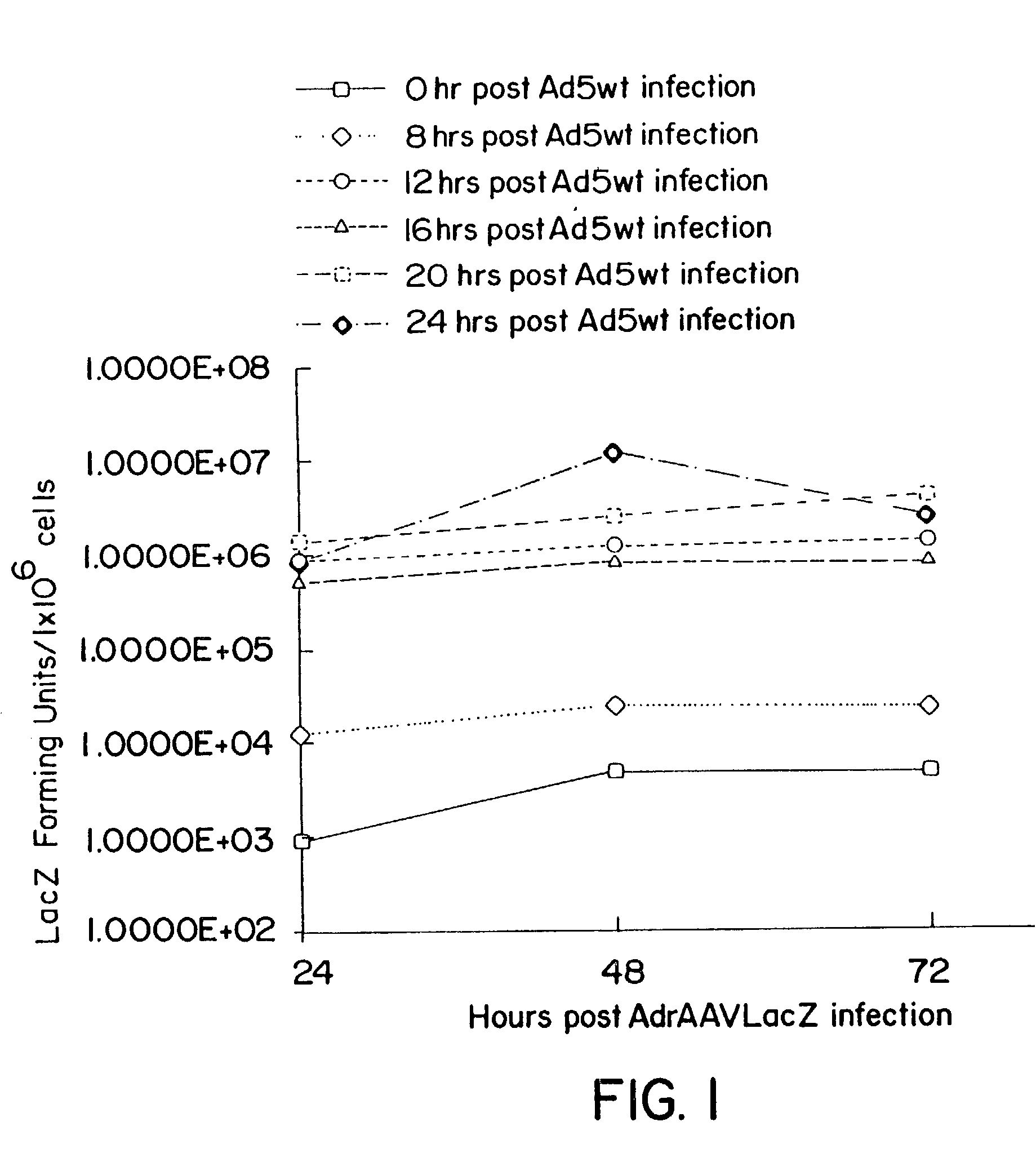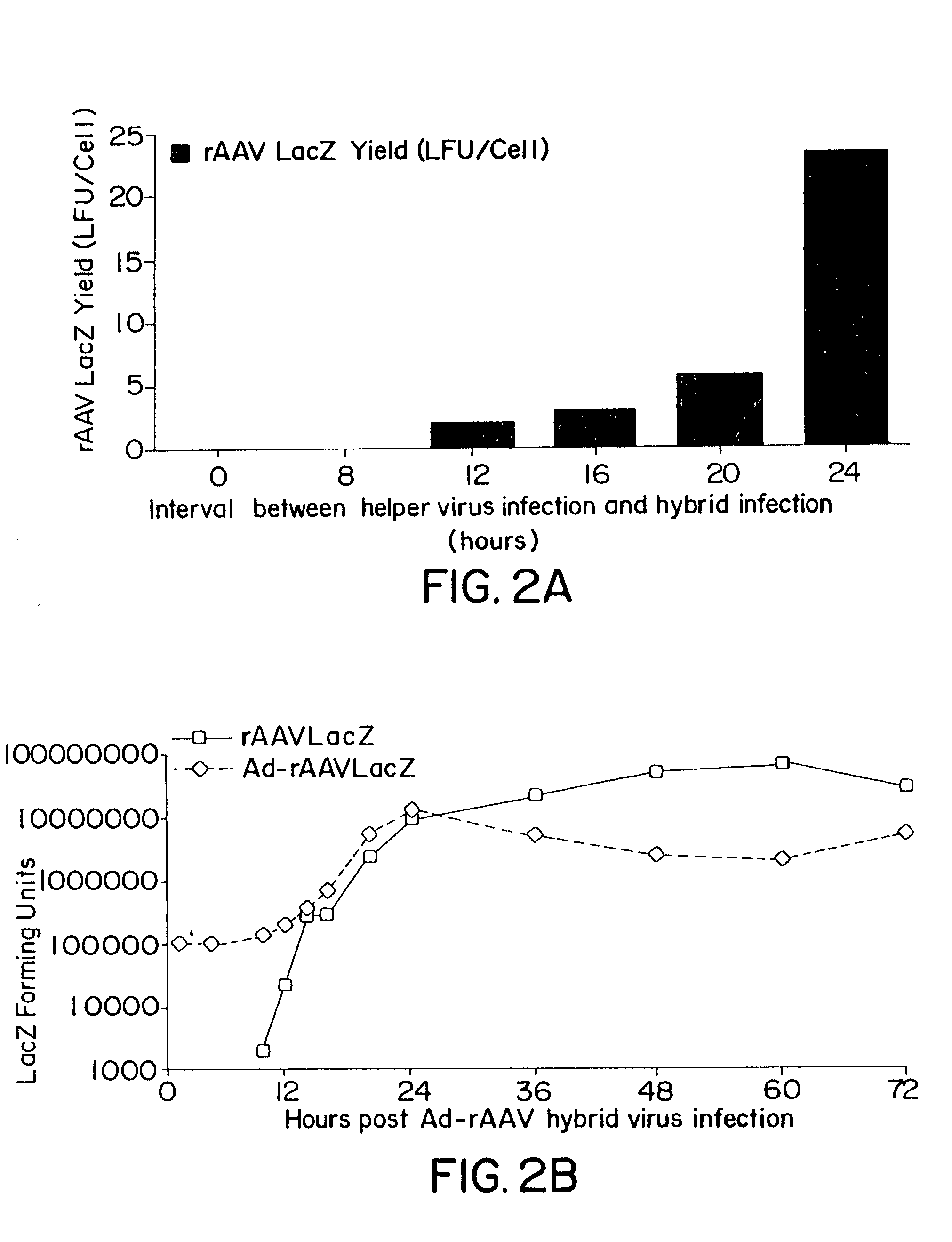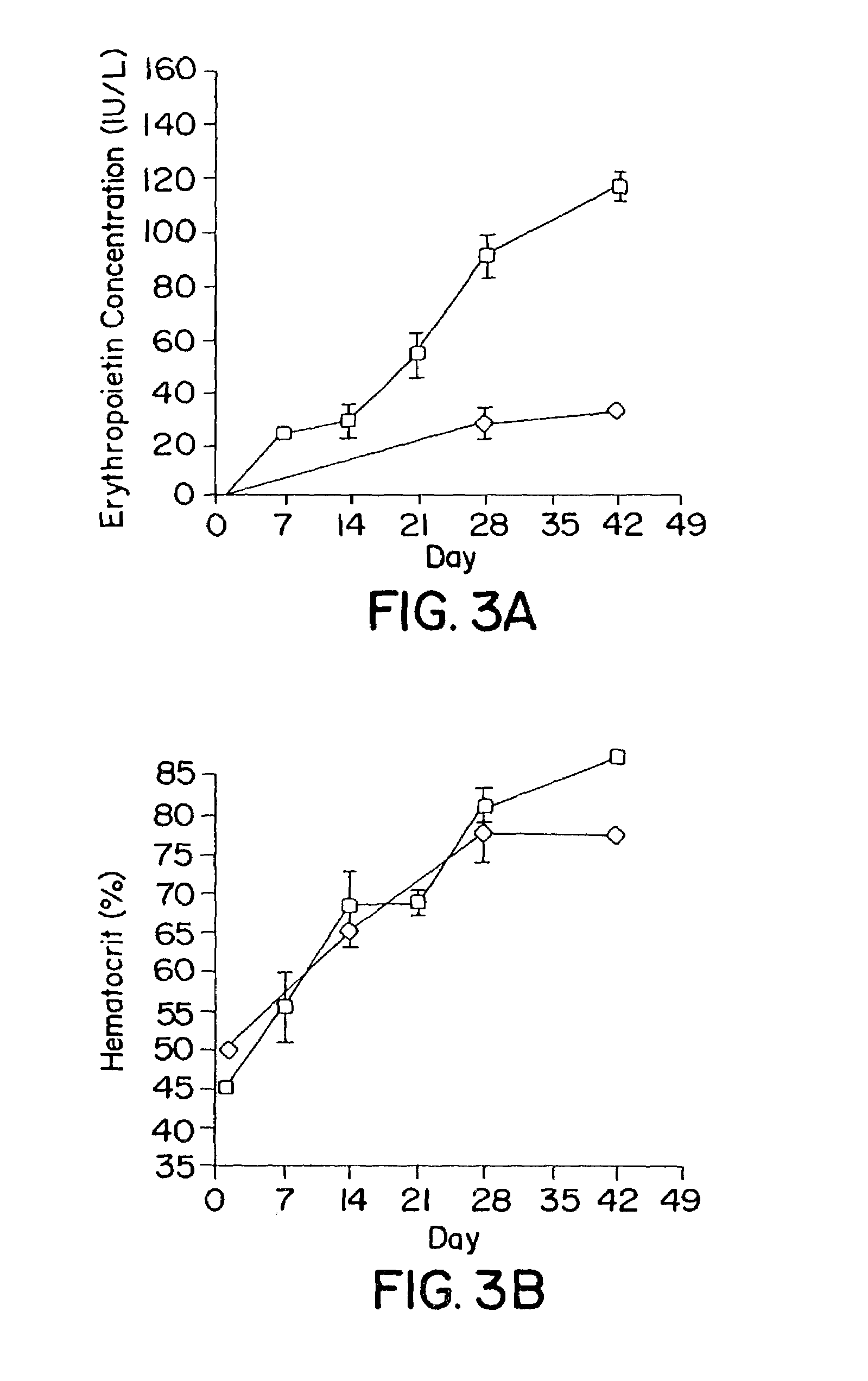Methods and cell line useful for production of recombinant adeno-associated viruses
a technology of adenovirus and cell line, which is applied in the direction of viruses/bacteriophages, genetic material ingredients, and genetically modified cells, etc., can solve the problems of inefficient methods of production, slow progress towards establishing aav as a transducer vector for gene therapy, and raav produced recombinantly and exclusive of wildtype aav reformed by recombinant, etc., to achieve the effect of high yield
- Summary
- Abstract
- Description
- Claims
- Application Information
AI Technical Summary
Benefits of technology
Problems solved by technology
Method used
Image
Examples
example 1
Construction and Characterization of the B-50 Rep / Cap Complementing Cell Line
[0052]The inventors stably transfected into a number of cell lines, rep / cap containing plasmids in which rep and cap are expressed from an inducible promoter. These included the endogenous P5 promoter of AAV induced by E1a of adenovirus as well as the heterologous promoters from the mouse metallothienien gene induced by divalent cations, and the long terminal repeat of murine mammary tumor virus induced by glucocorticoids. To overcome the problems associated with conventional rAAV production methods involving transfection of cis and trans plasmids in combination with helper adenovirus infection, three plasmid vectors were constructed for generating rep / cap cell lines.
[0053]Each plasmid vector contained a neomycin selective marker gene and expressed the AAV rep / cap genes driven by either their native P5 promoter (pP5-Rep / Cap), or the zinc-inducible sheep metallothionine promoter (pMTRep / Cap), or the dexameth...
example 2
The Kinetics of Rep / Cap Induction in B50 Cells
[0061]The kinetics of rep / cap induction in B50 cells was determined following infection with adenovirus. B50 cells were infected with wild type Ad5 at an MOI of 10 and total cellular proteins were prepared at different time points post-infection. Samples (50 μg) were fractionated on 10% SDS-PAGE gels and electrotransferred into nitrocellular membranes. Rep and cap proteins were detected with ECL system (Amersham Life Science) using mouse monoclonal antibodies clones 259.5 and B1 (American Research Products, Inc.) respectively. Adenovirus E1 protein was detected by a mouse monoclonal antibody against Ad2 E1a (Oncogene Science). The expression of E1a, rep protein, and cap proteins were observed on the gel (data not shown) as a function of time after infection and are summarized below.
[0062]In the absence of adenovirus, rep / cap proteins are not expressed. Infection with adenovirus results in a temporally regulated program of gene expression...
example 3
Recombinant AAV Production in the B-50 Cell Line
[0063]The productivity of rAAV expression by B-50 was assessed by infecting the cells at different MOIs with either (a) recombinant hybrid AdAAV virus and wildtype adenovirus type 5 (Ad5Wt) simultaneously; or (b) Ad5Wt alone for 8, 12, 16, 20 and 24 hours prior to infection with the hybrid AdAAV virus
[0064]A. Hybrid Virus Construction
[0065]The procedure for constructing hybrid AdAAV vectors has been described [Fisher et al, Hum. Gene Ther. 7:2079–2087 (1996)]. Briefly, rAAV genome containing a minigene cassette with the gene of interest and flanking AAV ITRs was isolated by PvuII restriction endonuclease digestion from prAAV cis plasmid and cloned into the EcoRV site of the shuttle plasmidpAdBglII. Transgenes included green fluorescent protein (GFP), LacZ, and a cDNA encoding erythropoietin from rhesus monkeys isolated by RT-PCR of RNA from pituitary. Each vector expressed the transgene from the immediate early promoter of cytomegalovi...
PUM
| Property | Measurement | Unit |
|---|---|---|
| Time | aaaaa | aaaaa |
| Time | aaaaa | aaaaa |
| Fraction | aaaaa | aaaaa |
Abstract
Description
Claims
Application Information
 Login to View More
Login to View More - R&D
- Intellectual Property
- Life Sciences
- Materials
- Tech Scout
- Unparalleled Data Quality
- Higher Quality Content
- 60% Fewer Hallucinations
Browse by: Latest US Patents, China's latest patents, Technical Efficacy Thesaurus, Application Domain, Technology Topic, Popular Technical Reports.
© 2025 PatSnap. All rights reserved.Legal|Privacy policy|Modern Slavery Act Transparency Statement|Sitemap|About US| Contact US: help@patsnap.com



